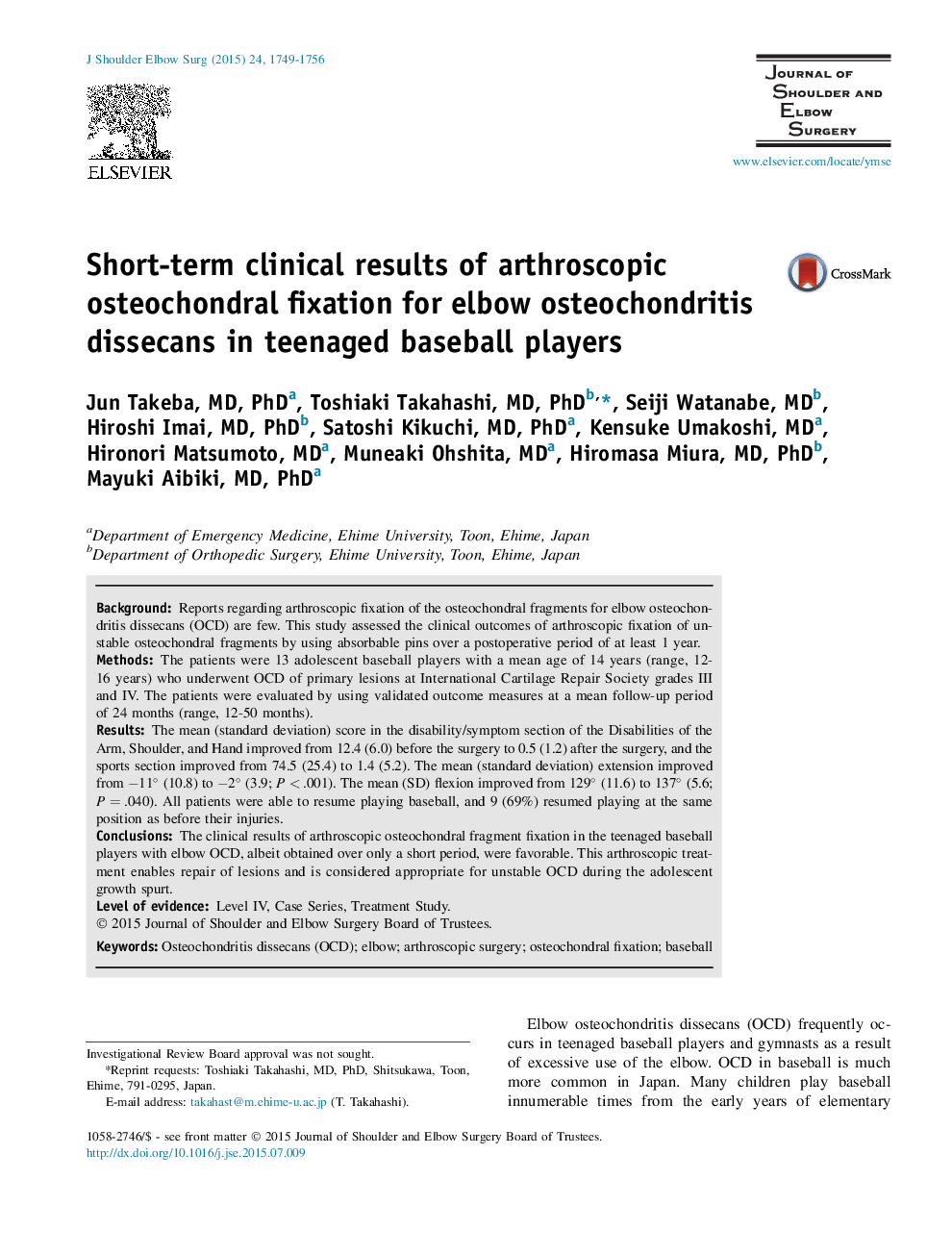| Article ID | Journal | Published Year | Pages | File Type |
|---|---|---|---|---|
| 4073262 | Journal of Shoulder and Elbow Surgery | 2015 | 8 Pages |
BackgroundReports regarding arthroscopic fixation of the osteochondral fragments for elbow osteochondritis dissecans (OCD) are few. This study assessed the clinical outcomes of arthroscopic fixation of unstable osteochondral fragments by using absorbable pins over a postoperative period of at least 1 year.MethodsThe patients were 13 adolescent baseball players with a mean age of 14 years (range, 12-16 years) who underwent OCD of primary lesions at International Cartilage Repair Society grades III and IV. The patients were evaluated by using validated outcome measures at a mean follow-up period of 24 months (range, 12-50 months).ResultsThe mean (standard deviation) score in the disability/symptom section of the Disabilities of the Arm, Shoulder, and Hand improved from 12.4 (6.0) before the surgery to 0.5 (1.2) after the surgery, and the sports section improved from 74.5 (25.4) to 1.4 (5.2). The mean (standard deviation) extension improved from −11° (10.8) to −2° (3.9; P < .001). The mean (SD) flexion improved from 129° (11.6) to 137° (5.6; P = .040). All patients were able to resume playing baseball, and 9 (69%) resumed playing at the same position as before their injuries.ConclusionsThe clinical results of arthroscopic osteochondral fragment fixation in the teenaged baseball players with elbow OCD, albeit obtained over only a short period, were favorable. This arthroscopic treatment enables repair of lesions and is considered appropriate for unstable OCD during the adolescent growth spurt.
